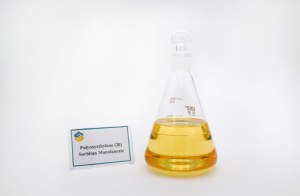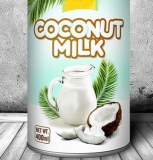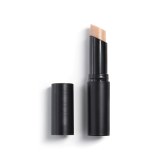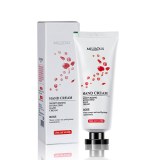Sorbitan esters and Polysorbates as nonionic offer many advantages over ionic surfactants including increase stability, enhance flexibility and provide wider compatibility. They are stable in mild acids, alkalis and electrolytes and do not react with ionic ingredients or actives.
Polyoxyethylene sorbitan esters, also known as polysorbates, are ethoxylated sorbitan esters. They are non-ionic hydrophilic surfactants that are commonly used as oil-in-water (O/W) emulsifier.
Our wide product range of ethoxylated sorbitol can be utilized for numerous applications, including, but not limited to, acting as emulsifiers, stabilizers, and foaming agents in bread improver and cake oil; stabilize special emulsification in cosmetics; for polysorbate with high polysorbate HLB values, they can be used as solutizers for essence; and for the ones with low HLB values, they act as emulsifiers for mineral oils. Polysorbates are considered to be non-toxic and safe food additives when used appropriately. Our polysorbates are sourced from vegetable/vegan ingredients.
Concocted surfactant mixtures can be made by combining different portions of polysorbate function and sorbitan esters, which can be tailored for specific product formulations.
FAQs of Our Polysorbates
Is polysorbate safe?
Similar to sorbitan esters, when ingested, polysorbate is hydrated into fatty acid moiety and polyoxyethylene sorbitan moiety.4 The fatty acids go through absorption and metabolism, whereas the polyoxyethylene sorbitan portions are poorly absorbed and excrete the body intact.4 Acute and long-term oral toxicity studies have shown that polysorbates have a relatively low risk of toxicity.4 The Joint FAO/WHO Expert Committee on Food Additives (JECFA) set a group ADI value 0-25 mg/kg body weight/day for polysorbate 20 80/polysorbate 20 and 80, polysorbate 10, polysorbate 50. Polysorbates are also shown to have no adverse effects, thus they are considered to be safe food additives. The safety of polysorbates 20, 21, 40, 60, 61, 65, 80, 81, and 85 has been evaluated by The Cosmetic Ingredient Review (CIR) Panel.5 The panel has concluded that these polysorbates are safe as cosmetic ingredients. If you want to buy polysorbate, please contact us.
What is an oil-in-water (O/W) emulsifier?
When an oil-in-water emulsifier is added to a mixture where water is the main component and oil is minor; it creates an oil-in-water emulsion. The hydrophobic portions of the emulsifiers surround the oil droplets and hydrophilic parts interact with the surrounding water environment; this allows oil droplets to suspend in water.
What is HLB value?
HLB value is the abbreviation for hydrophilic-lipophilic balance, it is the ratio between the hydrophilic portions and lipophilic portion of a surfactant. It is represented by a number between 1 and 20. An HLB value less than 6 indicates that the surfactant favors W/O emulsion; an HLB value greater than 8 favors O/W emulsion. HLB values in between 7 and 9 indicate that the surfactants are good wetting agents.
What is the difference between polysorbates and sorbitan esters?
Polysorbates are ethoxylated sorbitan esters that are made by ethoxylation of sorbitol with different fatty acids. Polysorbates are hydrophilic, whereas sorbitan esters are lipophilic
What are the differences of the range of polysorbates?
The various polysorbates differ by the type of fatty acids and the number of fatty acids attached to the polyoxyethylene sorbitan portions of the molecules. Thus, each of the polysorbates has its own hydrophilicity/lipophilicity property and characteristic.
Localisation : No. 7 the 2nd Jinnan Road, Fine Chemical Industrial Base, Qinghua Park, Donghua Town, Yingde city, 513058 Guangdong,
Personne à contacter : Cao Bonnie, 020 87568805







